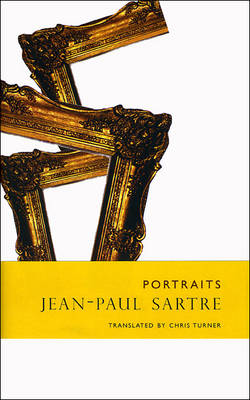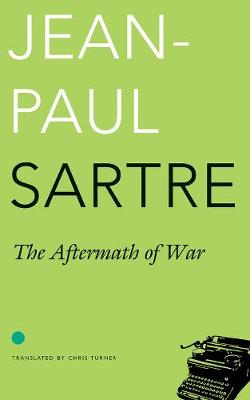The French List - (Seagull titles CHUP)
3 total works
Philosopher Jean-Paul Sartre counted among his friends and associates some of the most esteemed intellectuals, writers, and artists of the twentieth century. In "Portraits", Sartre collected his impressions and accounts of many of his notable acquaintances, in addition to some of his most important writings on art and literature during the early 1950s. "Portraits" includes Sartre's preface to Nathalie Sarraute's "Portrait of a Man Unknown" and his homages to Andre Gide, Albert Camus, and Maurice Merleau-Ponty. The essay on Merleau-Ponty casts considerable light on the recent history of French philosophy, particularly with regard to dominant postwar political conceptions. Also featured are lengthy studies of Sartre's close friend Paul Nizan and of the young Andre Gorz that are no less revealing, as well as Sartre's "Reply to Albert Camus," which sealed the ideological and personal break between the two writers on its publication in 1952. Alongside these major writings are fascinating articles on Tintoretto and a number of contemporary artists, including Alberto Giacometti and Andre Masson. Finally, "Portraits" concludes with two travelogue-style accounts of Sartre's time in Italy.
This new translation by Chris Turner presents these essays in their complete form as originally intended by Sartre and is essential reading for anyone interested in the artistic and intellectual history of the time.
This new translation by Chris Turner presents these essays in their complete form as originally intended by Sartre and is essential reading for anyone interested in the artistic and intellectual history of the time.
"Critical Essays" contains essays on literature and philosophy from a highly formative period of Jean-Paul Sartre's life, the years between 1938 and 1946. This period is particularly interesting because it is before Sartre published the magnum opus that would solidify his name as a philosopher, Being and Nothingness. Instead, during this time Sartre was emerging as one of France's most promising young novelists and playwrights - he had already published "Nausea", "The Age of Reason", "The Flies", and "No Exit". Not content, however, he was meanwhile consciously attempting to revive the form of the essay via detailed examinations of writers who were to become central to European cultural life in the immediate aftermath of World War II. Collected here are Sartre's experiments in reimagining the idea and structure of the essay. Among the distinguished writers he analyzes are Francis Ponge, Georges Bataille, Vladimir Nabokov, Maurice Blanchot, and, of course, Albert Camus, whose novel The Stranger Sartre endeavors to explain in these pages.
"Critical Essays" also contains a famous attack on the Catholic novelist Francois Mauriac, studies of the great American literary iconoclasts Faulkner and Dos Passos, and brief but insightful essays on aspects of the philosophical writings of Husserl and Descartes. This new translation by Chris Turner reinvigorates the original skill and voice of Sartre's work and will be essential reading for fans of Sartre and the many writers and works he explores.
"Critical Essays" also contains a famous attack on the Catholic novelist Francois Mauriac, studies of the great American literary iconoclasts Faulkner and Dos Passos, and brief but insightful essays on aspects of the philosophical writings of Husserl and Descartes. This new translation by Chris Turner reinvigorates the original skill and voice of Sartre's work and will be essential reading for fans of Sartre and the many writers and works he explores.
The Aftermath of War brings together essays written in Sartre's most creative period, just after World War II. Sartre's extraordinary range of engagement is manifest, with writings on post-war America, the social impact of war in Europe, contemporary philosophy, race, and avant garde art. Carefully structured into sections, the essays range across Sartre's reflections on collaboration, resistance and liberation in post-war Europe, his thoughts and observations after his extended trip to the USA in 1945, an examination of the failings of philosophical materialism, his analysis of the new revolutionary poetry of 'negritude', and his meditations on the visual arts, with essays on the work of Giacometti and Calder, both of whom Sartre knew well.


